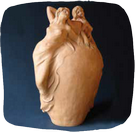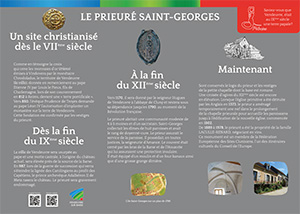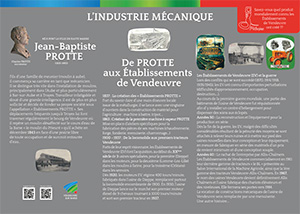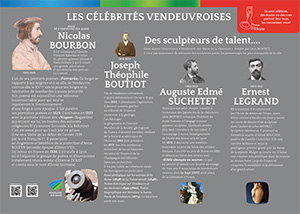Voici les différents panneaux du circuit patrimonial Mélusine :
Prieuré Saint-Georges
The Saint-Georges Priory
Did you know that Vendeuvre was a papal territory in the ninth century?
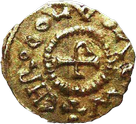
A Christianised site since the seventh century
The cross adorning the gold coins (triens) issued in Vindovera by Chrodoladus, a money maker, confirms that the territory of Vendeuvre (la villa), conferred to Pope Stephen IV by Louis the pious, son of Charlemagne, at his coronation in 812 in Rheims, became a ‘pontifical land’.
Around 850, Bishop Prudence of Troyes sought permission from Pope Leo IV to establish a monastery on the land of Vendeuvre. The remains of the priory corroborate the existence of this structure.
From the late ninth century
The villa de Vendeuvre was stolen from the pope and a castle mound, at the origin of the existing château, was built near the Barse source.
In 987, Prince-Archbishop Adalberon II of Metz destroyed the château during the succession war that saw the Carolingian lineage disappear in favour of the Capetians. The priory was considerably damaged.
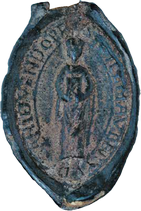
In the late 12th century
Circa 1170, Lord Hugues de Vendeuvre donated the priory to the Abbey of Cluny under the authority of which it remained until 1790, around the time of the French Revolution.
The priory housed a modest community of four to five monks and a sacristan. Saint-Georges collected the tithes of eight parishes and had the rank of a deanery cure. The Prior performed the service of the parish and owned the seigneury of Amance in all respects. The convent was surrounded by the streams of the Barse and the Houzotte, which provided insular protection.
It was also equipped with a mill and a communal oven as well as a large tithe barn.
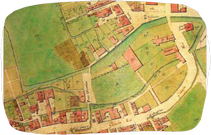
Saint-Georges Isle on a map dated 1785
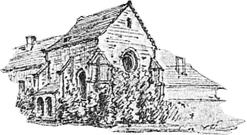
Present day
The Prior’s dwelling and the remains of the small chapel featuring a Romanesque base have been preserved and stunning 12th-century cross-arches are still standing. When the early church was destroyed by the British in 1373, the Prior installed a temporary nave in the extension of the priory chapel to accommodate parishioners until the completion of the new church started in 1502.
From 1889 to 1978, the priory was the property of a wine merchant family called LACULLE-RENARD.
This monument is part of the European Federation of Cluniac Sites, one of the Cultural Routes of the European Council.
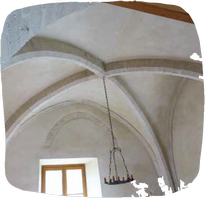
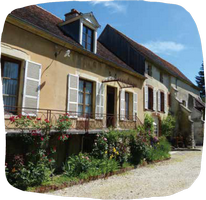
Une démarche initiée par la Région Grand Est et l'Agence de l'Eau Rhin-Meuse.
La distinction "Commune Nature" a été décernée en 2023 à 5000 communes ou intercommunalités de la région Grand Est.
Elle vise à amener vers de nouvelles pratiques en matière de non utilisation de pesticides, de développement de la biodiversité dans la gestion des voiries, espace verts et autres espaces publics.
Les actions mises en place ces dernières années ont favorisé la labellisation : fauche tardive du parc du château, mise en place des zones de non-traitement en partenariat avec deux agriculteurs de la commune, plan de fauche des espaces verts, aménagement de la Barse et ses abords.
Il existe 3 niveaux de distiction pour valoriser les bonnes pratiques : 1, 2 ou 3 libellules. En candidatant, le commune a obtenu dès le 1ère année, 2 libellules que vous verrez prochainement affichées dans Vendeuvre-sur-Barse.
Nous poursuivrons nos efforts pour la biodiversité, tout comme l'école Pierre et Marie Curie qui organise régulièrement des actions en partenariat avec le Centre Permanent d'Initiation à l'Environnement (CPIE) de Soulaines.

Voici les différents panneaux du circuit patrimonial Mélusine :
Industrie Mécanique
version Enfants
Le circuit patrimonial Mélusine version Enfants a été créé sur l'application GuidiGO (GuidiGO Inc.) - circuit Mélusine
Voici les différents panneaux du circuit patrimonial Mélusine :
Industrie Mécanique
The Engineering Industry
Do you know which world-famous product the Établissements de Vendeuvre developed?
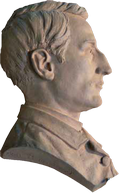
Charles PROTTE
successor
BORN IN PONT LA VILLE IN HAUTE-MARNE
Jean-Baptiste PROTTE
(1815-1893)
The son of a family of paddle mill workers, he started his career as a mechanic.
He soon made a name for himself installing mills, mainly in the Aube region and especially in Bar-sur-Aube and Troyes.
A relentless worker exhibiting great wisdom, he received an increasing number of requests and opted to set up his own company under the name ‘Établissements PROTTE’. His frequent trips to Troyes led him to travel through Vendeuvre regularly. There he spotted an abandoned mill on the Barse River, ‘Le Moulin du Prieuré’ (the Priory mill), which he acquired in December 1843. The mill was located opposite an unoccupied meadow, which was, furthermore, surrounded by water.
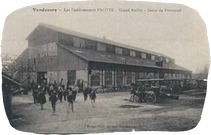
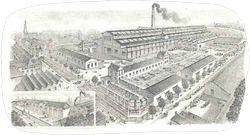
From PROTTE to Établissements de Vendeuvre
1837: Foundation of the ‘Établissements PROTTE’
Thanks to the expertise of some twenty local metalworkers, he began manufacturing agricultural equipment: threshing machines, etc.
1863: Launch of the first PROTTE steam engine
He introduced dedicated workshops for the manufacture of machine parts (boiler making, forging, foundry, carpentry, etc.)
1900 - 1937: From the traction engine to the first Vendeuvre tractors
Backed by their visionary spirit, the Établissements de Vendeuvre (EV) acquired three factories specialised in engines in the early 20th century. The first (in Dieppe) operated in engines, the second (in Lomme-Lez-Lille) in flour mills, and the third (in Orléans) in seeders.
As early as 1920, the 400 rpm EV engines manufactured in the Dieppe factory replaced the bulky 1900 traction engines everywhere.
The Dieppe plant released its first 9-horsepower diesel engine running at 1000 rpm in 1930, and introduced its first tractor in 1937.
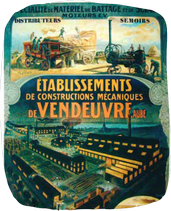
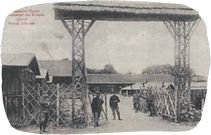
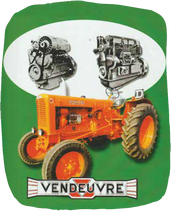
The Établissement de Vendeuvre (EV) and the war
During the successive conflicts (1870, 1914-1918, 1939-1945), EV experienced major disruptions (supply issues, enemy occupation, and destruction).
During the First World War, parts of the Vendeuvre factory buildings were commandeered to house a shelter to care for the wounded.
The 1950s: Reconstruction and outfitting for mass production.
Despite significant challenges resulting from the shortage of resources following the end of the war, EV undertook to restore the ruins and establish factories, new in both style and equipment, capable of mass-producing low-cost and flexibly designed equipment.
The 1960s: Takeover of the company by Allis-Chalmers.
In 1961, the Établissements de Vendeuvre marketed their last range of tractors, ‘the BL’, presented at the International Agricultural Machinery Exhibition, as well as the first range of Vendeuvre-Allis-Chalmers tractors. In 1967, the company changed its name to Allis Chalmers, and the factory manufactured forklift trucks and graders.
The plant closed around 1984 and the mechanical engineering vocation of the Vendeuvre factory was replaced by a joinery.
That’s another story…
Voici les différents panneaux du circuit patrimonial Mélusine :
Célébrités Vendeuvroises
version Enfants
Le circuit patrimonial Mélusine version Enfants a été créé sur l'application GuidiGO (GuidiGO Inc.) - circuit Mélusine
Voici les différents panneaux du circuit patrimonial Mélusine :
Célébrités Vendeuvroises
The Renowned Figures of Vendeuvre
Do you know the famous people who conferred their names to some of our schools and streets?
POET BORN IN VENDEUVRE-SUR-BARSE
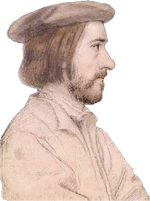
(1503–1550)
Nicolas BOURBON
His circle included François Rabelais and Hans Holbein, a painter and engraver whom he held in high regard and who sketched his portrait (see figure).
One of his earliest poems, ‘Ferraria’ (La forge), alludes to his origins and hometown, Vendeuvre, recognised for its forges and the manufacture of bombards (early cannons) since the 15th century. Today, his poem is an essential reference for those seeking to envision how a forge operated at that time.
He published his first poems in 1529, followed by the first edition of ‘Nugea’ (Bagatelles) in 1533, enticing the wrath of the religious authorities for portraying himself as favourable to the reformation.
This sufficed for him to be thrown into prison. He was not freed until early 1535 by King Francis I of France. Following his release, he journeyed to England and received the protection of Anne BOLEYN (second wife of Henry VIII).
Upon his return to France in 1536, he settled in Lyon where he socialised with a group of poets and humanists initially gathered around Etienne DOLET called the École lyonnaise.
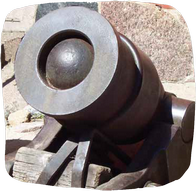
Talented sculptors...
Considering the importance of the ‘Sainterie’ established by Léon MOYNET in Vendeuvre-sur-Barse, it is hardly surprising to find sculptors among the most prominent people of the town.
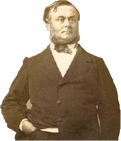
(1816–1875)
Joseph Théophile BOUTIOT
The son of modest farmers, he left school at the age of 12. Around 1840, leaving agriculture behind, he became a clerk at the city of Troyes Court. He took a great interest in geology, archaeology, geography, and history.
A member of the French National Geological Society, he was also a resident member of the Aube region Academic Society in 1852 and was appointed as president in 1872. His countless writings establish him as a renowned historian of Troyes and the southern Champagne region.
He did not overlook his native town in his research. This is displayed, in particular, in the following works: Geological essay on the Barse sources (1848), Le Valsurzeneth (1848), Historical information on Vendeuvre and its vicinity (1859–1860), and Biographical information on the Baron Pavée de Vendeuvre (1873).
Today, a nursery school bears his name in Vendeuvre.
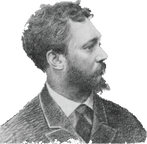
(1854–1932)
Auguste Edmé SUCHETET
While his father, a builder, was working on the extension of the ‘Sainterie’ buildings, Léon MOYNET noticed the gifted young man and hired him as an apprentice sculptor. A few years later, convinced of his talent, he encouraged him to attend the Lyon School of Fine Arts.
In 1878, he received an honourable distinction at the Salon of French artists. He was awarded the Rome Prize in 1880 and made his debut at the Salon of Artists with ‘Biblis changée en source’ (a representation of Byblis), resulting in a three-year travel scholarship. He leaves us numerous works of art, including Le Rapt (1907) located on Place de la Libération in Troyes.
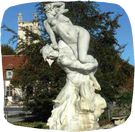
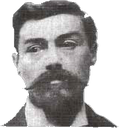
(1872–1912)
Ernest LEGRAND
Born in Lesmont, he attended the Troyes Design School, before being oriented to study design and sculpture in the Léon MOYNET workshop in Vendeuvre.
A talented sculptor, he pursued his education with Alfred BOUCHER (Camille CLAUDEL’s mentor). He had a distinguished career and was awarded the prestigious first prize from the Grand Prix de Rome for sculpture. Despite his short life, he produced an extremely prolific collection, including 10 pieces expressing the sensitivity and delicacy of a great artist, displayed in the Saint-Loup Museum in Troyes.
